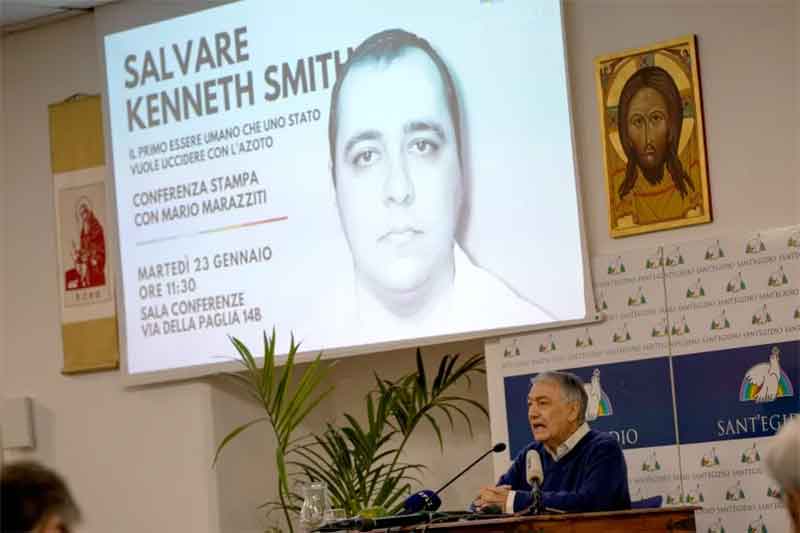
During the evening of January 25, Kenneth Eugene Smith, having failed to convince the US Supreme Court to delay his execution, became yet another victim of judicial, state-sanctioned murder. A previous, failed effort, using lethal injection, had been made in 2022. On this occasion, it was the state of Alabama which sought to bloody (or gas, in this instance) its copybook at the William C. Holman Correctional Facility in Atmore. The method of execution: nitrogen hypoxia.
Smith was convicted in 1989 for murdering Elizabeth Sennett, the wife of a preacher’s wife, in a murder-for-hire killing. His life, taken in turn, succumbed to a tawdry experiment of penological vice. When state authorities dabble with various methods of death, they can never be anything but cruel. Sometimes, these methods might even be unusual.
Defenders of capital punishment take refuge behind the words of the Eighth Amendment of the US Constitution, which has often functioned as a form of subversive encouragement to murderous authorities. While the amendment famously states that no cruel or unusual punishments are to be inflicted, the onus is then on officialdom to come up with a form of punishment that is not cruel, nor unusual. And how often has death by firing squad, lethal injection, or swift decapitation been defended on those very grounds?
Nitrogen hypoxia has received much press, much of it ghoulish. In December 2023, the US Chemical Safety and Hazard Investigation Board (CSB) released its final report into the deaths of six poultry plant workers. All had been victims of nitrogen asphyxiation. Investigators found that the Foundation Food Group facility in Gainesville, Georgia was staffed by workers inadequately informed, trained or equipped to deal with deadly leaks. Such concerns were also expressed about staff at the Atmore correctional facility. To date, the US lacks a national standard on the managing, storing, use and handling of such cryogenic asphyxiants as liquid nitrogen.
The degrading nature of the Smith execution was also highlighted by the fact that many US veterinarians would not even stoop to using nitrogen in euthanising animals. In 2020, the American Veterinary Medical Association stated in its euthanasia guidelines that using nitrogen was problematic for mammal species. Such gas would also have to be “supplied in a precisely regulated and purified form without contaminants or adulterants”.
UN experts, including Morris Tidball-Binz, Special Rapporteur on extrajudicial, summary or arbitrary executions and Alice Jill Edwards, Special Rapporteur on Torture and Other Cruel, Inhuman or Degrading Treatment or Punishment, also warned that nitrogen asphyxiation was “an untested method of execution which may subject [Smith] to cruel, inhuman or degrading treatment or even torture.”
None of these concerns has dissuaded lawmakers hunting for other methods of killing convicts. Oklahoma (2015) was the first state to permit prison staff to use nitrogen gas. Mississippi (2017) and Alabama (2018), followed. Much of this is being propelled by crude market considerations. The drugs used in lethal injections are becoming harder to obtain, be they because of shortages or restrictions placed on their use in executions by pharmaceutical companies.
With Alabama being the first to apply the measure, a dark interest in the minutiae of killing was taken. The state’s protocol on how the gas would be employed came under withering scrutiny. With nitrogen gas being administered through a mask, intruding oxygen might risk triggering a stroke, creating a permanent vegetative state, or cause excruciating suffocation. Depriving a person of oxygen could also lead to vomiting, thereby choking the victim.
With such complications in the offing, blissful, or wilful ignorance reigned among correction officials and lawmakers. For those involved in a state’s killing machinery, be they robed judges, hungry prosecutors, or the executioners themselves, this remains a standard response. Seedy justifications are offered: just retribution, deterrence, the confusion of novelty with humane policy. Alabama Solicitor General Edmund LaCour was keen to emphasise the latter point with his absurd remark that his state had “adopted the most painless and humane method of execution known to man.”
Alabama officials had submitted in a court filing that they expected Smith to lose consciousness within a matter of seconds and expire in a matter of minutes. “What we saw,” stated Smith’s spiritual adviser, Reverend Jeff Hood, “was minutes of someone struggling for their life.”
In witnessing such executions, those present commune and connive in the same scene. They become vicarious participants, many the unintended apologists for a spectacle featuring murder. On hand were journalists to feed on the macabre display of Smith’s demise. “I’ve been to four previous executions,” the insatiable Alabama journalist Lee Hedgepeth told the BBC’s Newsday program, “and I’ve never seen a condemned inmate thrash in the way that Kenneth Smith reacted to the nitrogen gas.” The session saw Smith gasping “for air repeatedly and the execution took about 25 minutes in total.”
The stern face of officialdom was supplied by John Hamm, Alabama Department of Corrections Commissioner. For Hamm, all that was aberrant about the scene could be rationalised, reasoned, and explained. Smith understandably held his breath as long as he could. His movements had been involuntary; he showed expected symptoms from inhaling nitrogen gas. He had lost consciousness quickly. “He struggled against the restraints a little bit but it’s an involuntary movement and some agonal breathing. So that was all expected.”
A more candid, vengeful note was struck by the state’s Attorney General, Steve Marshall. “Tonight, Kenneth Smith was put to death for the heinous act he committed over 35 years ago: the murder-for-hire slaying of Elizabeth Sennett, an innocent woman who was by all accounts a godly wife, a loving mother and grandmother, and a beloved pillar of her community.” Smith’s calculated death, crudely experimental and economically determined, was no less heinous, a vulgar rationalisation of cold intent, the exemplar of state cruelty.
Dr. Binoy Kampmark was a Commonwealth Scholar at Selwyn College, Cambridge. He currently lectures at RMIT University. Email: [email protected]













































